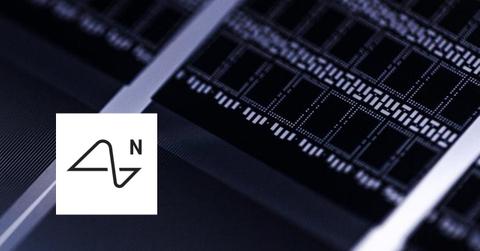Want to Participate in Neuralink Human Clinical Trials? How to Apply
Neuralink hasn't started accepting applications for volunteers who want to participate in clinical trials. However, you might still be able to apply.
March 29 2023, Updated 12:45 p.m. ET

It was about two years ago that billionaire Elon Musk sat down with podcast host Joe Rogan to discuss the brain chip (the Link) his neurotechnology company Neuralink has been designing. While Musk was hoping to get his brain chips implanted into people sometime in 2022, per Business Insider, he has run into some issues in carrying out his plans.
Musk founded Neuralink in 2016 alongside Max Hodak, although Hodak announced his departure from the company in May 2021. The brain chip, called “the Link,” has the ability to allow a person to control certain devices with their thoughts. Although Neuralink hasn’t directly asked the public for volunteers to sign up for human trials, there might be a way to do it.
Read on to find out how you can strengthen your chances in getting accepted to participate in Neuralink human trials.
What can Neuralink’s brain chip do?

Neuralink created a patient registry, though it doesn't guarantee you a spot in the clinical trials.
Before we get into how you can volunteer your brain to be probed and monitored, you should understand Neuralink’s mission and the outcome the company expects to achieve with its implant. Neuralink’s primary goal right now is to “replace faulty/missing neurons with circuits,” which would allow the brain to perform functions that the body isn't physically capable of doing.
Neuralink’s chip will first be implanted in individuals with serious spinal cord injuries because these people are severely limited in terms of physical abilities. The company said, “Micron-scale threads are inserted into areas of the brain” that are responsible for controlling movement. “Each thread contains many electrodes and connects them to an implant, the Link.”
A wireless charger has been designed to connect to the implant in order to charge the battery from the outside. Neuralink will be using a robotic system to insert the Link as “the threads are so fine and flexible that they can’t be inserted by the human hand.” A neurosurgeon would need to operate the robotic system to perform the procedure.
Once the Link is inserted, Neuralink’s app can be used to help a person practice controlling their device. The process of controlling a device with the brain starts by “recording neural activity in the brain’s movement areas.” When a person thinks about moving their hands or fingers, their intention to do so would be decoded and “sent over Bluetooth to the user’s computer.”
The people who have the Link implanted would first learn how to control simpler things like moving a virtual mouse and later progress to controlling a keyboard.
How can a person sign up for Neuralink human trials?
Neuralink hasn't started clinical trials in humans since its implant hasn't been approved by the FDA yet. At the beginning of 2023, several current and former employees told Reuters that the FDA rejected Musk's request to test out the Link due to various concerns, some of which include: the lithium battery used, the tiny wires and the potential for them to "migrate to other areas of the brain," and how the device can be removed without causing any damage to brain tissue.
Despite this, you may still be able to get your name closer to landing on the list of volunteers willing to participate in clinical trials. If you’re interested in signing up for human trials, you can apply to join Neuralink's patient registry. The company says that the patient registry will be used to help it determine preliminary eligibility for future Neuralink clinical trials.
If you want to be added to Neuralink's patient registry and potentially be considered for human trials, you must be 18 years of age or older and suffer from one or more of the following conditions:
- Quadriplegia
- Vision or hearing loss
- Paraplegia
- Unable to speak
Although it isn’t clear whether using this method will result in Neuralink accepting those interested in volunteering for clinical trials, it’s certainly worth a shot.
How safe is Neuralink’s implant?
If you’re considering applying to Neuralink to be considered for human trials, you should know that the company doesn't “have safety data in humans” as of yet. However, during a live-streamed interview hosted by The Wall Street Journal's CEO Council Summit, Musk confirmed that the brain chip is working well in monkeys.
Also, Musk said that Neuralink is working toward confirming that its brain chip “is safe and reliable and that the device can be removed safely.”
Neuralink has only tested its Link in monkeys. The company experienced a breakthrough after one of its “participants” was able to play a game of ping pong telepathically. Musk shared with the host that the company's standards for implanting the device “are substantially higher than that of what the FDA requires.”
The Tesla and SpaceX founder thinks that Neuralink’s implant could one day restore full bodily functionality in people with severe spinal cord injuries or those who lost the ability to move due to other causes.
